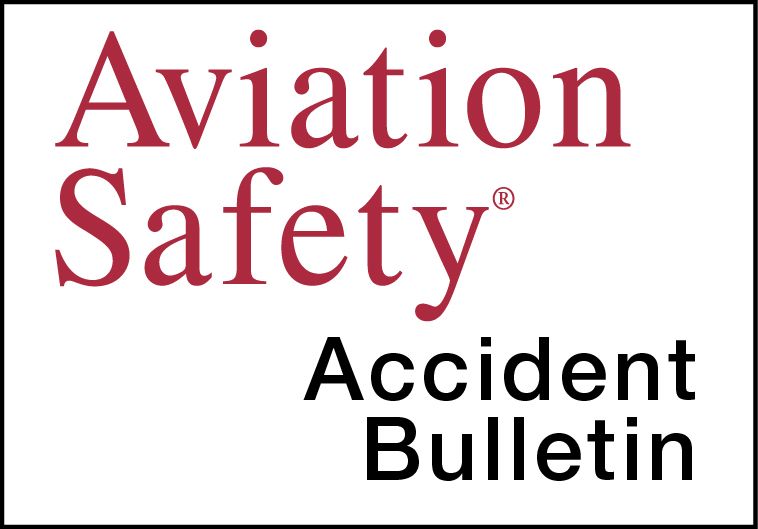AVweb’s General Aviation Accident Bulletin is taken from the pages of our sister publication, Aviation Safety magazine. All the reports listed here are preliminary and include only initial factual findings about crashes. You can learn more about the final probable cause on the NTSB’s website at www.ntsb.gov. Final reports appear about a year after the accident, although some take longer. Find out more about Aviation Safety at www.aviationsafetymagazine.com.
October 9, 2019, Aberdeen, S.D.
Cessna 172
At about 2235 Central time, the airplane was destroyed when it impacted terrain. The solo non-certificated pilot sustained fatal injuries. Dark night instrument conditions prevailed.
The airplane was flown to the departure airport on September 30, 2019, to be assessed for an annual inspection. After the pilot was informed of the tasks necessary complete the annual inspection, the pilot decided not to have the work completed. Airport surveillance video showed the airplane taking off at about 2231 on October 9, 2019. The airplane wreckage was located on October 21, 2019, by a hunter.
The wreckage was about seven miles north of the departure airport and evidenced that the airplane initially impacted a 60-foottall tree with its left wing. Debris was scattered beyond initial impact on a heading of 148 degrees. The fuselage skidded along the ground for about 500 ft, and came to rest on the edge of a small pond. Both wings remained attached to the fuselage with extensive crush damage. Flight control continuity was established from all control surface to the cockpit controls. All flight controls remained attached to the respecting surface. The flap handle was in its third notch, indicating 30 degrees of flaps. The propeller assembly was found fractured at the engine crank flange and both propeller blades were twisted.
Weather recorded at the departure airport at 2253 included wind from 350 degrees at 19 knots with gusts to 27 knots, visibility of seven miles in light rain, broken clouds at 700 feet, overcast clouds at 1400 feet, temperature of five degrees C and dewpoint of three degrees C.
October 17, 2019, Green Bay, Wis.
Aeronca 7AC Champ
The airplane was substantially damaged at about 1650 Central time when it impacted a moving vehicle while on short final to a private turf runway. The private pilot and the vehicle occupant sustained fatal injuries. Visual conditions prevailed.
Earlier, after flying to have lunch with his mechanic, the accident pilot mentioned he was concerned about the wet turf runway at the airplane’s home airport, stating he preferred to land near one end. Later, according to witnesses and a vehicle dashboard camera, the airplane was about five feet over the county highway adjacent to the end of Runway 1 when it impacted the front left side of the westbound vehicle. The airplane remained on top of the truck after the collision. The truck departed the right side of the county highway, entered a ditch, and came to rest near a residential driveway.
October 29, 2019, Colonia, N.J.
Cessna 414A Chancellor
At 1058 Eastern time, the airplane was destroyed when it impacted trees and houses. The solo commercial pilot was fatally injured; there were no ground injuries. Instrument conditions prevailed, and the flight operated on an IFR flight plan.
Review of preliminary FAA radar data depict the airplane beginning a descent at 1053:22 from 1900 feet MSL and flying a track consistent with the final approach course for the GPS-A approach into Linden, N.J. At 1057:22, the airplane was about 2.25 NM from the missed approach point at 400 feet MSL and a groundspeed of 90 knots. Altitude and track remained constant, but the airplane slowed, at first to 80 knots, then 70. At 1058:02, the airplane descended to 375 feet MSL, turned left to 050 degrees and slowed further to 66 knots. At 1058:07, the last flight track datapoint recorded the airplane at 175 feet MSL and heading 321 degrees at 82 knots’ groundspeed.
Two surveillance cameras showed the airplane flying below an overcast ceiling in a shallow left bank, then enter a rapidly descending left turn and continuing its roll to the left. A witness observed the accident airplane in a steep left bank, about 80 feet above the ground, then saw it strike a tree and a house. He indicated that the engine noise was “extremely loud.” The throttle, mixture and propeller control levers were found in the full-forward position. The left and right fuel selector handles were found pointing straight forward in an intermediate position between main and crossfeed.
October 30, 2019, Atlanta, GA
Piper PA-28R-200 Arrow II
The airplane was destroyed at about 1032 Eastern time following an inflight breakup and impact with a residential building and terrain soon after takeoff. The commercial pilot and passenger were fatally injured. Instrument conditions prevailed; an IFR flight plan was in effect.
Shortly after takeoff, the flight was cleared to a VOR to the east but turned to the southeast. After correcting, the airplane continued eastbound for approximately three miles before again turning southbound. After ATC instructed the pilot to fly a 090-degree heading, the pilot advised they had “lost their vacuum gauge.” The airplane was at 5000 feet and turned to the northeast briefly before it entered a right turn and rapidly descended to 3700 feet. The controller instructed the pilot to maintain “wings level” and maintain 4000 feet, but the pilot did not respond. There were no additional communications with the flight, and radar contact was lost.
This article originally appeared in the January 2020 issue of Aviation Safety magazine.
For more great content like this, subscribe to Aviation Safety!



































